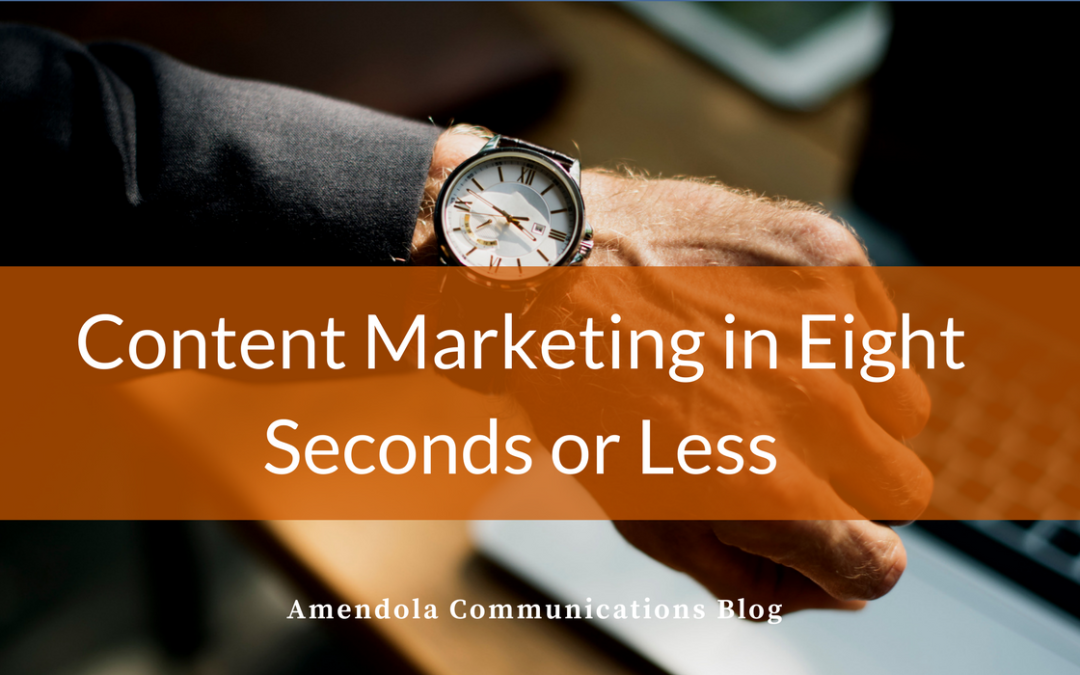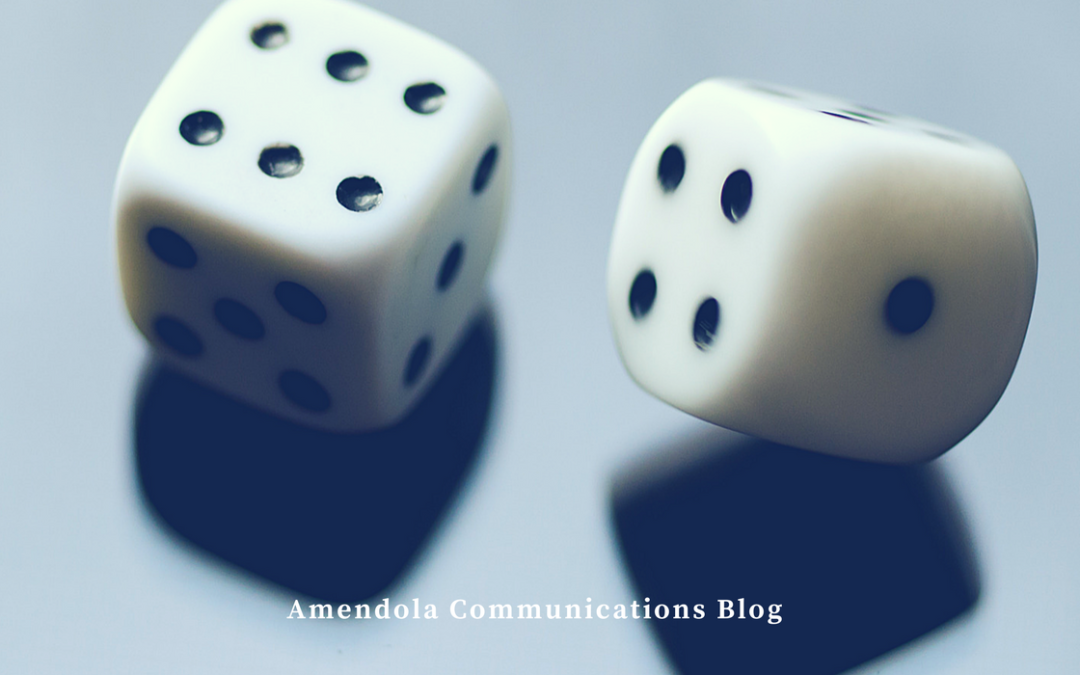by Matt Schlossberg | Mar 21, 2018 | Blog
Before social media, cross-platform campaigns and general business trends toward greater economy and efficiency of services, public relations and marketing though often collaborators were two distinct disciplines. Despite a kind of “kissing cousins” relationship, each had its own mission and purpose.
In today’s world, however, public relations and marketing are connected in ways that are both complex and granular. How effectively these well-blended professions work together is key to positively and creatively positioning your business for success.
Two Faces or a Vase?
It used to be that marketing handled advertising and PR handled earned media. Both jobs required that they make the business look good. That’s still true today kind of. It depends on how you look at it, and even then it can be hard to explain.
Let’s start with a visual the Rubin’s vase. This is a rather famous optical illusion that is usually depicted as a simple black-and-white image that can be interpreted differently depending on who is looking at it. One person looking at the image may see the shape of a vase, while another might glimpse two faces in profile facing each other. The person who sees the face can eventually see the vase, and the person who sees the face can see the two profiles, but neither person can they maintain both images concurrently.

This is what PR and marketing used to look like. Marketing helped move the company’s product (two faces), while PR sold the “vase” in the form of the company’s brand and reputation.
Today, those distinctions are not as stark. Businesses are expecting their PR and marketing teams to find a way to see two faces and a vase at the same time. Like never before, PR and marketing need each other to help a business succeed.
A Distinction without a Difference?
OK, so the average business executive may not really care about whether PR and marketing represent a single entity or distinct areas (after all, they care about results, which as we know, always fall freely from the magical Results Tree). It’s OK we’re used to it.
But you should care. More than anyone else in the company, the PR and marketing teams orbit in close and consistent proximity to your customers. Understanding how they best work together can make or break a business. If they are not on the same page, your company will not be on the same page with the customer.
You do the math.
The Content Example
One of the reasons why PR and marketing are “colliding” is that in today’s environment content is king. Byline articles, blog posts, tweets, status updates, e-mail blasts. It seems that every new piece of content is “old” by the time the final stamp of approval is given.
Campaigns highly customized to the business or even a specific initiative within the enterprise maximize your business’s core messages. But they also act in a way to bring a measure of control, discipline and meaning to the tsunami of content most businesses need to produce to stay relevant in hyper-competitive industries.
The success of these campaigns often hinges on how well marketing and PR work together.
With any initiative, the Golden Rule is “early and often.” This means that your PR and marketing pros need to engage early and often in order for the client to enjoy the end result (capitalizing on the success of a campaign or initiative).
PR and marketing teams feed on data both internal (from sales, product developers, c-suite executives) and external (customers and market shifts within the industry). That data will ultimately define the functional aspects of a campaign (the best vehicles and channels to reach prospective customers) and the emotional resonance (how the precise positioning of a message impacts a customer and their willingness to buy from and stay loyal to the business).
Final Thoughts
When I start with a new client, one of my first goals is to get to know the marketing team and what they are working on. I also ask to engage with the sales team. What are customers connecting with? How do they interact with the company? And I don’t accept stock answers. I drill down. Sometimes, a turn of phrase or just the right word can be the different between a lost sale and a signature on the dotted line.
Years ago, I might not have thought to do this. Today, I understand that the data I acquire from them will inform the shape of my PR campaign. I also understand that my PR campaign will affect everything on their side from sales presentations and the keywords and phrases used in a brochure to social media campaigns and the priorities on the content calendar.
Marketing and PR, while still very much distinct, are travelling toward the same goal and often taking the exact same road. There are the occasional places where the two diverge, but understanding those subtle differences is where true collaboration and the success of your business lies.

by Stephanie Janard | Nov 29, 2017 | Blog
One of these days I’m going to put together a sort of “Road Warrior Olympics,” in which contestants compete on how well they can conduct business while riding in an Uber, going through security at the airport, and even in the midst of the plane’s takeoff and landing. That’s how impressed I am with the multitasking skills of the thought leader healthcare executives I regularly interview for various writing projects. I probably have more interviews with people driving to the airport than I do while they’re in an actual office building.
Just last week, I interviewed the CEO of an operating room analytics company while his Uber driver took him to Heathrow. Just as he was arriving at the airport, he discovered his flight was actually leaving from a different airport. He was only momentarily at a loss for words then crisply told me he’d call me right back. Expecting it to be more like a day, I wished him good luck getting on his flight.
Five minutes later, my phone rang. The CEO was back on track to the right airport and we picked up where we’d left off.
These are the dream accounts the ones where thought leaders are actually available to share their thoughts with the writer who will create a byline or case study that’s hopefully as compelling as the way the thought leader made his or her points. I cannot overstate the importance of having access to these people.
Yes, a preliminary brief on the topic is a good starting point. But in my experience, when information is transmitted through multiple middlepersons, the thought leader inevitably reads what was written and either deems it way off track or missing key points.
If you are the person who is the main liaison with your PR agency, resist the temptation to take the following shortcuts which I’ve put in the format of some common excuses for blocking writer access to thought leaders:
“She’s just too busy. Can I just give you the salient points and you can dash a quick byline off?”
At this point in my career, I probably can do this more or less effectively. But something will be missing: the thought leader’s voice and latest insights. The information that a skilled interviewer which PR agency writers must be, and that’s non-negotiable knows how to draw out of even the most reticent interviewee.
Also, you are presumably paying good money for the services of a professional writer. Why not get all the value you can from your investment? Blocking the writer from an interview that would likely result in a much better byline, simply for the sake of convenience and speed, is like filling up on all the cheap starches at buffet instead of selecting the more delectable treats.
“It takes us so long to get writing projects through the review queue. Let’s just use language that’s already approved.”
You mean that language that’s staler than a loaf of bread with a missing zip tie that’s been sitting on a kitchen counter for over a week? This is marketing messaging suicide. Just like other departments in the business, marketing must be able to move nimbly. If it really takes that long to get projects approved, you must fight for a more streamlined process. Or else your marketing department will become known as the graveyard for ideas.
Can we write a byline based on these three or four existing pieces? That way we won’t have to interview anyone.” This is similar to the above scenario. And sure, I can do it, but again you’re wasting the resources of a professional writer by basically having them do assembly line work. You could hire an el cheapo content mill writer instead if all you really need is to put a donkey’s tail on a fish’s head.
Now some thought leaders themselves are the cause of the block. Perhaps they are under the impression they are too busy or are just too inexperienced at being a thought leader. They may not be the right thought leaders for you to develop. But sometimes it just takes an interesting interview and byline to get these promising thought leaders on board. Some tips for finding their thought leadership mojo can be found here and here.
Another benefit for these newbies is that interviewing with a writer is great practice for subsequent interviews with the media.
What writers should bring to the table
Thought leadership time is valuable, and writers should make the most of it. Here is what a thought leadership should expect from a writer:
- An advance idea of questions if possible. This gives the thought leader time to process and give thought to what will be under discussion. Of course, the conversation doesn’t have to stick exactly to these questions. But the thought leader should go into the conversation with more than just a broad idea about what will be discussed.
- An opportunity to review the proposed draft. These are your words, your ideas, your thoughts. It’s also your name on the byline. As such, you deserve to have the opportunity to review all drafts, especially the final set for publication. I’ve seen a byline author horrified when a piece he didn’t sanction get published with inaccurate information which was called out by industry peers. (Obligatory side note: it wasn’t a piece I wrote. In fact, it was the impetus for bringing us on board.)
- Openness to giving and receiving feedback. This is your byline. Let the writer know if that isn’t your voice or if points are incorrect or missing or need further clarification. But resist the urge to “just write it yourself.” That’s like hiring a chef to cook you a meal and then going in and adjusting the seasoning yourself. Tell them what you want. If they are a professional, they can do it. In my experience, fewer drafts result when reviewers contain their edits to comments in the margins.
To recap: a good writer is a budding thought leader’s best asset. Rather than keep them apart, foster this relationship to the fullest extent you can. Soon your thought leader will leap from “budding” to “champion” and not just of the Road Warrior Olympics.
by Administrator | Oct 17, 2017 | News
SCOTTSDALE, Ariz., Oct. 17, 2017 Amendola Communications, a nationally recognized, award-winning healthcare and healthcare IT public relations and marketing agency, announced today that GlobalMed, an international provider of telehealth solutions, has selected Amendola to be its communications partner.
GlobalMed is the world leader in telemedicine, enabling more than 3 million telehealth consults each year in more than 55 countries. Many of the world’s leading medical groups, healthcare enterprises and government agencies partner with GlobalMed to deliver best-in-class patient care using the company’s unparalleled expertise in creating sustainable, integrated and connected telehealth programs.
“We are delighted to have Amendola and their experienced team to assist us in communicating the value that GlobalMed brings to their clients and partners,” said Patrick LaVoie, Chief Operating Officer of GlobalMed. “We selected them after a careful review and are confident that their deep healthcare expertise and content marketing experience will provide invaluable guidance and insights.”
Amendola will provide public relations, social media and content marketing services to advance the GlobalMed brand among key stakeholders in the U.S. healthcare industry and other commercial markets.
“GlobalMed is well-known as the telehealth provider to the White House, the Veterans Administration and many other government agencies across the world, but less well-known outside of the public sector despite their size, experience, and unique value proposition,” said Jodi Amendola, CEO of Amendola Communications. “We are excited to introduce GlobalMed to media and key stakeholders in the commercial healthcare industry. Our proven track record in promoting healthcare technology companies will help to elevate the GlobalMed brand among journalists, industry analysts, prospective clients, and the healthcare community at large.”
About GlobalMed
GlobalMed‘s evidence-based telehealth solutions power the largest telehealth programs in the world, facilitating 3.5 million consults each year, enhancing diagnostics and improving patient outcomes in 55 countries. GlobalMed is the only vertically integrated provider of products and technology that deliver HIPAA-compliant video collaboration among healthcare professionals and patients, regardless of location. GlobalMed partners with leading medical groups, healthcare enterprises and government, and is the telehealth provider for the White House.
Founded in 2002 by a Marine Corps Reserve Veteran still serving as CEO, GlobalMed is proud to be a Veteran Owned Small Business (VOSB).
Media Contact Marcia Rhodes | mrhodes@acmarketingpr.com | 602-793-1561

by Lisa Chernikoff | Oct 4, 2017 | Blog
As you work on your content strategy, think about this: According to a recent study, the average person now loses concentration after only eight seconds. I would ask you to pause and think about that but then I’ll risk of losing the remaining seconds of your attention entirely if I haven’t already. As a “fun fact,” researchers noted that even goldfish which are “notoriously ill-focused” have an average attention span of nine seconds.
So, whether that fact is fun or concerning is still be determined, but it really isn’t that shocking. This study simply quantifies the impact of a highly digitized lifestyle on the human brain. After all, we live in a world where our phones are constantly buzzing with emails, texts, news alerts, and social media notifications. We live in a world where”
Sorry, I got distracted for a moment. Did you know that Kim and Kanye are expecting their third child via surrogate? My phone just vibrated with that “breaking” news, as well as four work emails, three personal emails, and two trivial text messages. And even if celebrity gossip isn’t your guilty pleasure, you’re likely experiencing a similar scenario every hour of every day.
But to be clear, the aha moment from this study is not that goldfish are smarter than us. It’s an aha moment for us as marketing and public relations professionals. The study has profound implications for those of us who communicate for a living. To be successful, we must adapt our strategies and tactics to the reality of eight second attention spans.
Why evolving content doesn’t mean dumbing it down
In today’s world of digital and information overload, crafting content that is relevant and meaningful for your target audience is mission-critical. Remember that having shorter attention spans doesn’t mean that your customers are not decision-makers. It doesn’t mean that they’re less intelligent. It doesn’t mean that they don’t have the same pain points. It just means that they need to absorb information differently. It just means that despite downloading your white paper, they’re probably not getting past page one. There’s no shame. It’s the new normal.
That’s why evolving your content marketing is not about dumbing down the information. It’s not about simplifying or going back to basics. It’s about making your content snackable. In fact, your new bite-sized content can still convey the same concepts and ideas as the longer pieces but that content must be more concise and free of fluff.
Even more importantly, it must provide just a taste to satisfy their brief hunger and keep their interest. It must leave the audience wanting more of your content snacks. That’s what marketing is all about.
How to create tasty content snacks a recipe for success
Snackable content for the eight second attention span is just a new way of creating, organizing, and promoting content. To create tasty content snacks, you don’t need to start from scratch. You don’t need all new ingredients. Your content kitchen is likely full of big, heavy content meals which can be remixed and reused to fit the new snackable content mold. The good news is that one content meal equals several content snacks.
Now, let’s enter the content kitchen and see how to turn those content meals into content snacks. Here are three examples:
- Transform your white paper into an infographic and a cheat sheet with must-do’s.
- Transform your case study into a checklist of best practices, or a series of checklists that span everything from implementation to training and optimization.
- Transform your 30-minute webinar into a sequence of 30 second videos that highlight that key learning objectives.
And rather than being sad about the lost of art of white paper reading, keep in mind that multiple content snacks derived from the same content meal not only convey the same messages but also can easily become a lead nurturing campaign or useful follow-up references for your sales team to share with prospects.
I think it’s time to stop mourning the white paper. Instead, it’s time to cook up some bite-sized content. After all, it’s just waiting to be eaten.

by Philip Anast | Sep 27, 2017 | Blog
As we strive to be better communicators and storytellers, it often helps to get out of our comfort zones and read inspirational literature that can teach us new things. We often find those types of books in classical literature, or from the latest fiction and non-fiction books. Sometimes, “How-to” guides also help.
That happened to me recently when I picked up the book, “A Mind for Numbers: How to Excel at Math and Science (Even if You Flunked Algebra).” You may be asking yourself, “Why would a PR guy be reading a book about math and science?” Isn’t the reason you pursued journalism and then PR in the first place is that you stunk in those other areas?
Well, as it turns out, author Barbara Oakley, Ph.D., did, too. But through a gradual retraining of her brain, she earned a Ph.D. in systems engineering after completing bachelor’s and master’s degrees in Electrical Engineering, and Electrical and Computer Engineering, respectively. She now teaches engineering at Oakland University in Detroit, and is a leading educator in the area of STEM education.
While her book is primarily geared toward helping high school and college students successfully navigate the aforementioned disciplines, it’s ultimately a guide to improving skills and techniques for learning how to learn. And that can be useful for people in any profession, including PR.
Two modes of thinking
For instance, Oakley describes the two modes of thinking: the focused and diffuse.
The focused mode is like the flashlight setting that casts a bright light in a narrow area. It’s a direct approach to solving problems that requires rational, analytic and sequential ways of thinking. When we’re working intently on a project, like writing a white paper or drafting a PR plan/strategy, we use the focused mode of thinking.
But the diffuse mode also plays an important role in those projects. It taps other parts of the brain and is akin to turning your flashlight setting to casting a wider yet less powerful light. As its name suggests, the diffuse mode is wider and big picture. It’s a resting state in our brains. It works quietly in the background and allows us to form new insights. It kicks in when our minds wander, or when we take a break from a focused task to walk, jog, listen to music, sleep or play video games.
Oakley’s point, backed by the hundreds of research studies that inform her book, is that we must maximize both types of thinking to learn and tackle problems.
If we’re working on a specific assignment, it’s important to step away from that work at intervals to allow the diffuse mode to enter the picture. By pursuing a leisure activity or working on some other job assignment, we allow our diffuse mode of thinking to continue working on the first task at hand and lend new insights. The diffuse mode opens up possibilities that we may not have considered in the focused mode and prevents us from believing that only one approach to a project is the single way of accomplishing it.
Taking a better approach
Here are some other practical tips that I gleaned from the book that we can translate to our own profession and help us do our jobs better:
- Avoid procrastination because it prevents the diffuse mode from helping a project or media campaign. While the luxury of time is not always possible in our profession, especially in crisis communication situations, building a timetable of assignments and deadlines, with thoughtful consideration, can help improve the overall response and results.
- Don’t cram to memorize a speech or the big PR plan presentation in one day. Rehearse and study over a series of days and/or weeks. Research shows that we retain the material better, avoid reading the screen verbatim, and make more genuine presentations.
- Avoid reading literature or meeting notes over and over again to learn the material. Instead, use a technique called “pause and recall,” i.e., turn away from the literature and notes after each page or several pages, and describe the concept in one’s own words; that’s the way we build chunks that form strong neural connections in long-term memory.
- Take a 21-minute nap to refresh the brain (but don’t tell the boss). The brain’s neural networks need to be reset from time-to-time, which freshens our outlooks toward problem-solving
- “Lady Luck favors those who try.” Sometimes, we feel downtrodden if a media pitch fails to elicit that desired interview, for example. Perhaps it’s time to let the diffuse mode help; alternatively, we could pick up the phone, be persistent (within reason), and converse with that target reporter directly. In my experience, with professionalism and respect for the journalist on the other end, the odds are good.
As in any learning endeavor, Dr. Oakley’s observation rings true: “The better I got (at math), the more I enjoyed what I was doing. And the more I enjoyed what I was doing, the more time I spent on it.”
Page 6 of 15« First«...45678...»Last »



